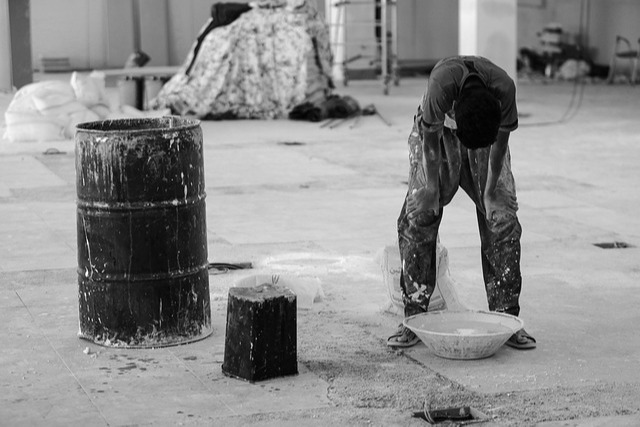February 27, 2023
1- Why are the working conditions of child and young workers regulated separately in Turkish Labor legislation?
Working conditions of child and young workers are regulated separately in order to ensure the health and safety, physical, mental, moral and social development of child and young workers, to continue their education and to prevent their economic exploitation.
2-Who is a child worker?
A person who has completed the age of fourteen, has not completed the age of fifteen and has completed primary education.
3-Who is the young worker?
A person who has completed the age of fifteen but has not completed the age of eight. Special Working Conditions for Young Workers
4-What is light work?
In terms of its structure and nature and according to the special conditions during its fulfillment;
- Jobs that are not likely to have a detrimental effect on the development or health and safety of children.
- It is the work that does not prevent school attendance, vocational training or participation in a training program approved by the competent authorities and benefiting from such activities.
5-What is the child labor age?
It is forbidden to employ children under the age of fifteen.
- However, children who have completed the age of fourteen and compulsory primary education can be employed in light works that will not hinder their physical, mental, social and moral development and the attendance of those who continue their education to school.
- Children who have not completed the age of fourteen can be employed in arts, culture and advertising activities that will not prevent their physical, mental, social and moral development and the attendance of those who continue their education to school, provided that they make a written contract and obtain separate permission for each activity.
6- Which occupations are permitted to employ children and young workers?
The jobs that are allowed to employ child and young workers are listed in the annex of the Regulation on the Procedures and Principles of Employment of Child and Young Workers. According to the said Regulation;
- Child workers who have completed the age of fourteen and completed their primary education can only be employed in light jobs specified in Annex 1 of the Regulation.
- Young workers who have completed the age of fifteen but have not completed the age of 18 can be employed in jobs permitted to work in Annex 2 of the Regulation.
- Young workers who have completed the age of sixteen but not completed the age of eighteen can be employed in the jobs permitted to work in Annex 3 of the Regulation.
7- Are there any restrictions on employing young workers graduated from vocational and technical education schools?
Within the scope of the Vocational Education Law No. 3308, young workers who have completed the age of sixteen and graduated from vocational and technical education schools and institutions, on the condition that their health, safety and morals are fully secured, they can be employed in jobs suitable for their specialization and profession, regardless of the limitations set forth in the annex of the Regulation on the Procedures and Principles of Employment of Child and Young Workers.
8- How are the working hours of children who have completed the compulsory primary education age and do not go to school?
The daily working hours of child and young workers are applied in a twenty-four hour period, taking into account the uninterrupted fourteen hours of rest.
- Have completed the age of fourteen, have completed compulsory primary education, and
Working hours of children who do not go to school cannot be more than thirty-five hours a day in seven weeks.
- Working hours of children who have completed the age of fifteen cannot exceed eight hours per day and forty hours per week.
• Working hours of children under the age of fourteen working in arts, culture and advertising activities cannot exceed five hours a day and thirty hours a week.
9- How is the working time of preschool and school children applied during the education period?
The working hours of preschool children and children attending school during the education period can be at most two hours a day and ten hours a week, out of educational hours.
10- How are the working hours of school-going children applied during the periods when the school is closed?
Working hours of children attending school cannot be more than seven hours a day and thirty-five hours a week during school closures. For children who have completed the age of fifteen, this period can be increased to eight hours a day and forty hours a week.
11- What are the conditions counted as daily working time?
In calculating the daily working time of child and young workers, in addition to the cases counted as working time specified in Article 66 of the Labor Law No. 4857,
- The time spent in trainings required by the employer is counted as working time.
- The hours spent in courses and meetings sent by the employer outside the workplace and the periods spent in vocational training programs organized by authorized institutions and organizations are counted as working hours.
- The periods in which they cannot continue their work due to their participation as representatives in conferences, congresses, commissions and similar meetings organized by national and international institutions and organizations regarding working children and young people are counted as working hours.
12- How long are the rest periods of child and young workers?
It is obligatory to give child and young workers a break of thirty minutes for jobs lasting more than two hours and less than four hours, and one hour in the middle of the working time for jobs lasting from four hours to seven and a half hours.
13-How long is the week holiday leave of child and young workers?
Weekly vacation leave of child and young workers cannot be less than forty continuous hours.
14-Can child and young workers be employed on national holidays and public holidays?
Child and young workers cannot be employed on national holidays and public holidays.
There are a total of 15.5 days of national holidays and public holidays in a calendar year. The national holiday starts from 28 October at 13:00 and lasts for 1.5 days, including 29 October. General holidays are 1 January, 23 April, 1 May, 19 May, 15 July, 30 August, 1 day each, Eid al-Fitr 3.5 days and Eid al-Adha 4.5 days.
15-How long is the annual paid leave period to be given to child and young workers?
The annual paid leave period to be given to child and young workers is at least 20 days.
16-Can the annual paid leave to be given to child and young workers be divided?
It is essential that the annual paid leave be used uninterruptedly. However, in cases where it is beneficial, it can be used by dividing it into two at most, upon the request of the child and young worker.
17-When are the leave of child and young workers given?
Annual paid leave is given to children and young workers who attend school or education during periods when schools are on vacation and courses and other education programs are not attended.
18- Who cannot employ child and young workers?
- Employers or employer’s representatives who are convicted of crimes against children cannot employ child and youth workers.
- Employers or employer representatives who have been convicted of disgraceful crimes cannot employ child and youth workers.
19-Does the employer who employs children and young workers have to conclude an employment contract?
The employer has to make a written employment contract with the parent or guardian of the child and young worker he employs.
20-Is there an obligation to obtain permission for children to be employed in art, culture and advertising activities?
Children under the age of fourteen; They can be employed in arts, culture and advertising activities that will not prevent their physical, mental, social and moral development and the attendance of those who continue their education to school, provided that they make a written contract and get a separate permission for each activity.
21-Does the employer have an obligation to inform the parent or guardian of the child and young worker?
The employer is obliged to inform the parent or guardian of the child and young worker about the work in which the child and young worker will be employed, the risks he may encounter and the precautions taken.
22- Should the employer ask for a student certificate from the child and young worker who attends school?
The employer must ask the child and young worker who attends school to obtain a document that proves that they are a student before they start to employ them, and the said document must be kept in their personnel file.
23-Does the employer have an obligation to provide training before starting to employ child and young workers?
Employers should provide child and young workers with necessary on-the-job training on risks in the workplace, compliance and legal rights, and according to the nature of the job, before starting to employ them.
24-What are the principles to be followed in the employment of child and young workers?
• The safety, health, physical, mental, moral and psycho-social development, personal disposition and abilities of the child and young worker should be taken into account in the placement and during the employment.
• Child and young workers can be employed in jobs that will not hinder their attendance and success at school, and that will not prevent them from preparing for a career choice or from participating in vocational training approved by the Ministry of National Education.
• Employers are obliged to ensure that child and young workers are protected against any risk that may endanger their development, health and safety due to lack of experience, ignorance of existing or potential risks, or their immaturity.
25-Can the employer make changes in the working conditions of the child and young worker?
The employer should consider the following issues in order to make this change in cases where there is a need for a change in working conditions before or during the employment of the child and young worker:
- The suitability and arrangement of the workplace and the place where the work is done,
- The shape and order of the work equipment used and the way they are used,
- Business organizations,
• Level of training and instruction given to child and young workers.
26- What is the obligation of the employer who identifies a risk in terms of physical or mental development and safety of children and young workers?
As a result of the evaluation to be made by the employers, if a risk is detected in terms of physical or mental development and safety of children and young workers, necessary medical checks must be carried out as soon as possible.
27-What are the light works where child workers can be employed?
- Fruit, vegetable, flower picking works, excluding those that require working in a way that may pose a risk of falling and injury,
- Auxiliary works in poultry fattening and silkworm breeding,
- Sales works alongside tradesmen and craftsmen,
- Ancillary jobs for office services,
- Distribution and sale of newspapers, magazines or printed matter (except for cargo handling and stacking),
- Jobs as a busboy and salesperson in bakeries, patisseries, greengrocers, buffets and non-alcoholic restaurants,
- Attaching labels to sales items and packaging by hand,
- Auxiliary works in libraries, fairs, fairs and exhibitions (except for cargo handling and stowage),
- Auxiliary works in sports facilities,
- Flower sales and arranging works.
28- What are the jobs where young workers can be employed?
- Fruit and vegetable canning, production of vinegar, pickles, tomato paste, jam, marmalade, fruit and vegetable juices,
- Fruit and vegetable drying and processing works,
- Halva, slurry, waxing, molasses manufacturing works,
- Auxiliary jobs in butchers,
- Tea processing works,
- Preparation of various nuts,
- Auxiliary works in sheep breeding,
- Broom and brush manufacturing works,
- Hand-made wood carving, bone, horn, amber, meerschaum, Erzurum stone and other materials, ornaments, buttons, combs, pictures, mirrors, frames, glass and similar goods manufacturing works,
- Sales, labeling and packaging works in wholesale and retail stores and shops,
- Clerical and auxiliary works in office workplaces,
- Flower growing works, excluding spraying and fertilizing,
- Jobs in the service sector, excluding liquor stores and culinary services,
- Other apparel, walking stick and umbrella manufacturing works,
- Production of foodstuffs and subjecting them to various treatments,
- Production of quilts, tents, sacks, sails and similar goods and other ready-made goods without weaving,
- Manufacturing of crates, boxes, barrels and similar packaging materials, baskets and similar goods made of cork, reed,
- Works related to pottery, tile, faience, porcelain and ceramic production (except oven works and works that scatter silica and quarts dust),
- Flyer distribution works,
- Production-related works in glass, bottle, optic and similar material workshops (except for furnace works and works that emit silica and quartz dust, heat treatment, coloring and chemical works),
- Works related to the production of vegetable and animal oils and the production of substances made from them (except for the extraction stages in oil production works by extraction of oily substances such as pomace or similar oily substances made with flammable or irritating solvents such as carbon sulfide),
- Spinning and weaving preparation works, which are separated from cotton, linen, wool, silk and the like and their wastes from room, carding and starching looms and processes related to dyeing, and equipped with natural climate and aspiration system,
- Fishery works,
- Works that help to prepare for production in sugar factories,
- Bagging, barreling, stacking and similar works that do not require lifting more than 10 kg without a vehicle,
- Water-based glue, gelatin and cola production works,
- Manufacturing and repair of boats, boats and similar small marine vehicles (except paint and varnish works).
29- What are the jobs that can be employed by young workers who have completed the age of sixteen but have not completed the age of eighteen?
- Works of tile, brick, firebrick and pipes, pots, pipes and similar construction and architectural materials produced by firing the soil,
- Drying and bonding works, production of plywood, plywood, artificial wood made of chip wood and artificial wood with PVC surface coating, and impregnation works,
- Manufacturing of paraffin articles,
- Cleaning, picking, separating and similar works of bird and animal hair,
- Forming of plastic materials and manufacturing of plastic goods (except the production of PVC and the production of goods made of PVC),
- Manufacturing of ready-made textiles (Curtains, home textiles, automobile products and the like),
- Paper and wood pulp production works,
- Cellulose production works,
- Manufacturing works of all kinds of articles and materials made of paper and paper products,
- Works in grain warehouses and works in flour and paddy mills,
- All kinds of ink and ink-containing material manufacturing works.
30-What are the jobs in which workers under the age of eighteen cannot be employed?
Workers under the age of eighteen cannot be employed in the following jobs, even if they are allowed jobs depending on age records.
- In preparation, completion and cleaning works,
- Production and wholesale of alcohol, cigarettes and addictive substances,
- Wholesale and retail sales of flammable, explosive, harmful and dangerous substances, production, processing, storage of such substances and all kinds of works where there is a possibility of exposure to these substances,
- In works performed in environments with high noise and/or vibration,
- In jobs that require working in extremely hot and cold environments,
- In works done with substances that are harmful to health and cause occupational diseases,
- In works where there is a possibility of exposure to radioactive materials and harmful rays,
- In jobs that require extra attention and require uninterrupted standing,
- In works where wages are paid with piece rate and premium system,
- In jobs that do not allow him to return to his home or to his family at the end of work, except for educational purposes,
- In jobs that are above the physical and psychological competencies with the occupational physician report,
- In jobs that are likely to cause lack of training, experimentation, and lack of attention to safety,
- In money handling and collection works,
- In the works carried out during the periods coinciding with the night period specified in the first paragraph of Article 69 of the Labor Law No. 4857.
Source: Republic of Turkey Ministry of Labor and Social Security, Special Working Conditions Booklet for Child and Young Workers in 30 Questions – Translated by Karen Audit – KarenAudit owns the rights to this translation, and any unlawful use is forbidden.
Legal Notice: The information in this article is intended for information purposes only. It is not intended for professional information purposes specific to a person or an institution. Every institution has different requirements because of its own circumstances even though they bear a resemblance to each other. Consequently, it is your interest to consult on an expert before taking a decision based on information stated in this article and putting into practice. Neither Karen Audit nor related person or institutions are not responsible for any damages or losses that might occur in consequence of the use of the information in this article by private or formal, real or legal person and institutions.






